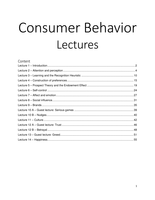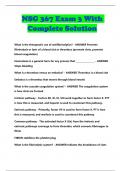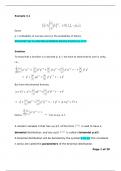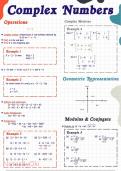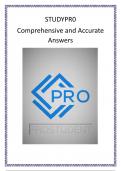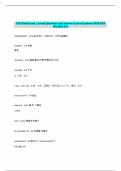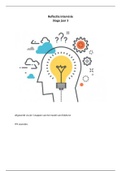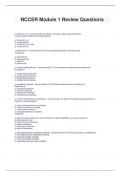Lectures
Content
Lecture 1 – Introduction ............................................................................................................... 2
Lecture 2 – Attention and perception ........................................................................................... 4
Lecture 3 – Learning and the Recognition Heuristic .................................................................. 10
Lecture 4 – Construction of preferences .................................................................................... 15
Lecture 5 – Prospect Theory and the Endowment Effect ........................................................... 19
Lecture 6 – Self-control ............................................................................................................. 24
Lecture 7 – Affect and emotion .................................................................................................. 27
Lecture 8 – Social influence....................................................................................................... 31
Lecture 9 – Brands .................................................................................................................... 35
Lecture 10 A – Guest lecture: Serious games ........................................................................... 39
Lecture 10 B – Nudges .............................................................................................................. 40
Lecture 11 – Culture .................................................................................................................. 42
Lecture 12 A – Guest lecture: Trust ........................................................................................... 46
Lecture 12 B – Betrayal ............................................................................................................. 48
Lecture 13 – Guest lecture: Greed............................................................................................. 51
Lecture 14 – Happiness............................................................................................................. 55
1
,Lecture 1 – Introduction
1. What is consumer behavior?
If you look at textbooks about consumer behavior, you’ll see that authors put
groups in public on the cover, but also brands and technology. It’s not about one
person individually, but about interaction, relationships, products, etc.
Consumer behavior is the processes involved when selecting, purchasing, using or disposing of
goods and services, ideas or experiences to satisfy needs and desires.
So, we want to satisfy our needs and desires. We accomplish this by using goods, services,
ideas or experiences. But, we have to make choices, because we can’t do everything. We do
this by selecting, purchasing, using or disposing.
These choices can be about money, but also about our time or effort.
But, how do people make these choices? And are these choices made successfully?
Consumer behavior is a cyclical process. We have needs and desires, and we take steps to
fulfill these. We start with searching information or alternatives. Next we have to make a choice
between the goods, services or activities. Afterwards we take a look at the outcomes of the
choices that we have made.
If we want to understand why someone is making a certain choice, we have to follow that
person through this process.
Needs and desires
If the ideal state and actual state are equal, there is no problem. But, if the ideal state is higher
than the actual state, there is discrepancy and people have to put effort in fulfilling their
needs and desires.
But, what do people need? This differs per person and there is still no clarity about this.
For example, the Maslow’s hierarchy of needs can be used.
Searching for information
People can search for information in magazines or they can read experiences from others.
Reading experiences from others can give a psychological problem, because it is hard to
determine which experiences you should trust or ignore.
Choice
We have to make choices between products, but which strategies do we use? There can be a
conflict between our intuition and our deliberative thinking.
People use a lot of shortcuts to make their decisions. Some say we use them for a reason and
others say that these shortcuts are bad.
Outcomes
We want to spend our money, time and effort on a way that is makes us happy. But, do people
how to spend their resources or do they make mistakes?
2
,2. Why study consumer behavior?
We study consumer behavior to improve marketing, to learn how to make better decision, and to
design effective public policy to address social problems.
Better marketing through data
We can apply experimental methods to answer marketing
questions. Online companies use A/B testing to improve
their website performance. There are made two different
websites and visitors will be send to one of them. The
companies can then see which layout works better, and
therefore how they should present information.
For example, the text ‘Learn more’ can be used best if
you want people to sign up, and black and white photos
appeals most to the viewers.
This are small tests, but they can have big results!
How can Consumer Behavior help?
It can help us to resist social influence, because we can learn to identify marketing and
persuasion techniques. Also, Consumer Behavior can help us to know when we can use
heuristics or how we should record and organize important information to make a good decision.
Improving public policy
Giving information about how many
calories the meals have, doesn’t lead to
healthier choices. People try to get as
many calories as possible for the lowest
price. So, this has the opposite effect.
But, it does work to give information about how long you have to
run to burn the calories in the meal or drink. If you use this,
people are less likely to buy soda and more likely to not buy a
drink or buy water or a fruit drink.
Addressing social problems
There is a big difference between the diseases that are responsible for a lot of deaths
in the United States and the diseases that get a lot of money donated. For example,
breast cancer is very successful in raising money, but why? We can use their
technique for other diseases as well.
Often people are presented with numbers to show how big the problem is. They try to
motivate people to donate money with this technique. However, sometimes individual
stories work better to get money donated. When should you use which strategy?
3
,Lecture 2 – Attention and perception
1. Sensation and perception
Sensation are the responses from sensory receptors (eyes, nose, ears,
mouth and skin) to stimuli like light, color and sound. So, this is a process.
It begins in the outside world, where the sensory stimuli are. Then your
sensory receptors receive this information, and this leads to sensation.
Thresholds
But, we are not able to sense every stimulus. This depends on the threshold. The threshold is
the minimum level of strength or intensity that a stimulus must have before we can sense them.
There are two kinds of thresholds:
The absolute threshold is the bare minimum of the stimuli that has to be met before it can
be detected by sensory receptors. So, the absolute threshold is met if you don’t have to
guess what you sense, but you can actually detect it.
There are individual differences in the absolute threshold. For example, what we can
hear or taste changes around our lifespan. If you are younger, you can hear higher
frequencies and you can taste better, than if you are older. Also, some people are just
better at tasting (‘supertaster’)
The differential threshold is the smallest possible change in a stimulus that can be
detected. So, how different two stimuli have to be before we can notice the difference
between these two stimuli. This is called the Just Noticeable Difference (JND).
Weber’s law
As an equation, we can use the Weber’s Law. It determines the point at which a change can be
detected. If the stimulus is more intense, the change should be larger to detect it.
∆𝐼 is the Just Noticeable Difference (JND), so how big the change has to be
before people notice it. This is based on:
∆𝐼 = 𝐼 ∗ 𝐾 1. 𝐼 is the intensity of the stimulus.
2. 𝐾 is the sensitivity of the primer. This says how sensitive we are to changes
2. of a certain stimulus. So, the percentage of change in 𝐼 that is needed to
2. get noticed.
For example, something costs 150 euros (𝐼) and people notice the change if we change the
price with 10% (𝐾), then we would need a change of 150 * 0.10 = 15 euros (∆𝐼) to let people
notice the difference in price. But, if something costs 1500 euros (𝐼) and again people notice the
change if we change the price with 10% (𝐾), then we would need a change of 1500 * 0.10 = 150
euros (∆𝐼).
So, if products become more expensive, you’ll need a proportionally larger change in the
price to let consumer notice it.
So, we have these stimuli in our world and we sense them. Then we decide which stimuli we are
giving our attention and how we are going to interpret these stimuli. This is called perception,
this is the process by which these stimuli are selected, organized and interpreted.
4
, 2. Attention
Attention is the extent to which consumers focus on the stimuli that are received and consciously
process them. Sensing a stimulus doesn’t mean that we also give attention to it, because only a
small portion of all stimuli to which we are exposed gets attention and gets processed. This is
called perceptual selection.
This perceptual selection is very important in advertising, because showing people
your ad doesn’t mean they also notice it. In the first printed advertisement, companies
just gave as much information as they could. However, consumers only give attention
to these kind of ads if they really want to learn something about the product.
Drawing attention
There are multiple ways to drawn attention to your advertisement:
1. Salience, this is the extent of how noticeable different the stimulus is from the
background or environment. This has to do with the figure-ground principle, this is the
relationship between a stimulus and the background in which it is perceived.
For example:
It gets your attention, because of The contrast in the It gets your attention because
the contrast in color, the direction pattern gets your you think it is an advertisement
of the grass and the hair of the lion attention, it also for mascara, but it is actually
is different, there is a difference in differs in directions. an ad for illiteracy.
clarity, and the lion is in the center.
2. Vividness, this means that it is emotionally interesting because it is related to your needs,
it is concrete and image provoking, and it is right in front of you face (proximate).
For example:
They look scary, They look like drug junkies, but This is about 9/11. It shows how many
but they are is actually are fashion junkies. airplanes should have hit the tower if
already dead and an even amount of people had to be
ready to be eaten killed as with a tsunami
5


